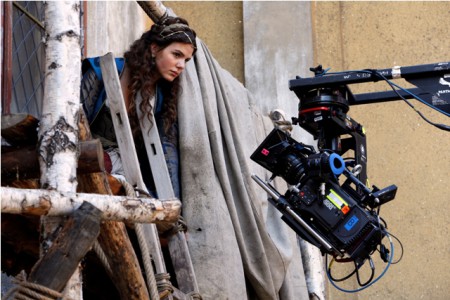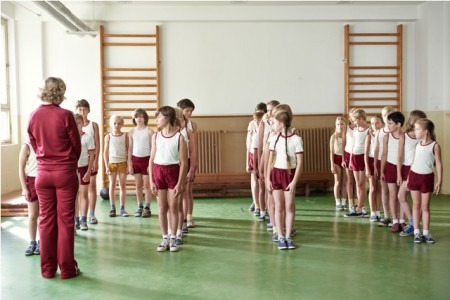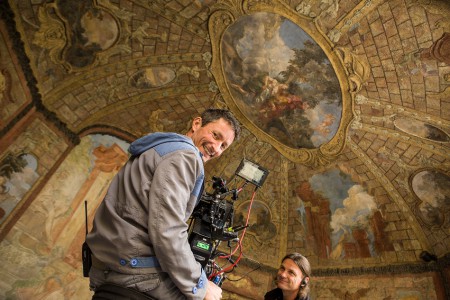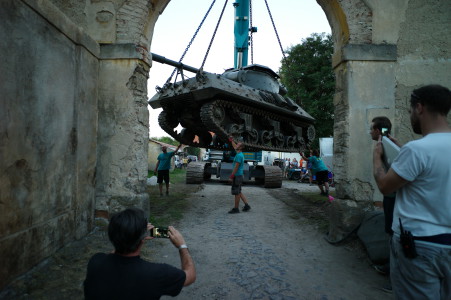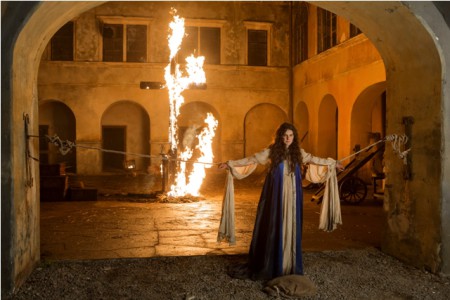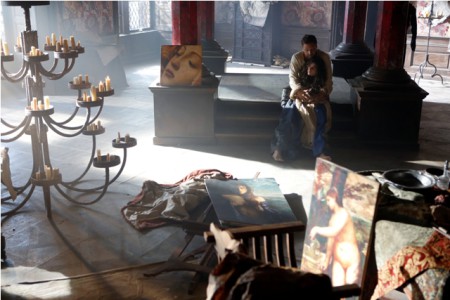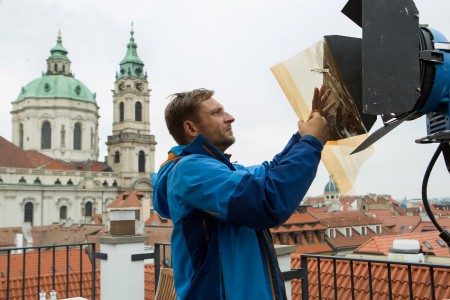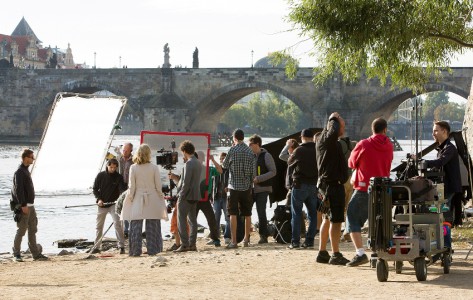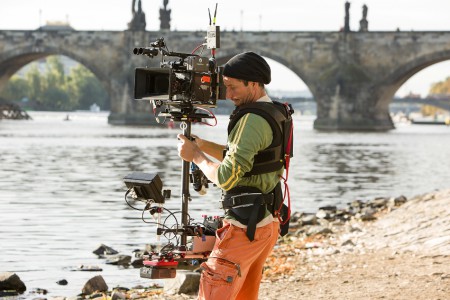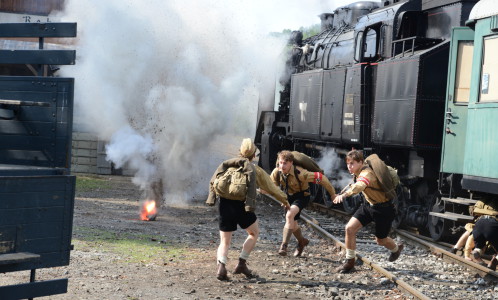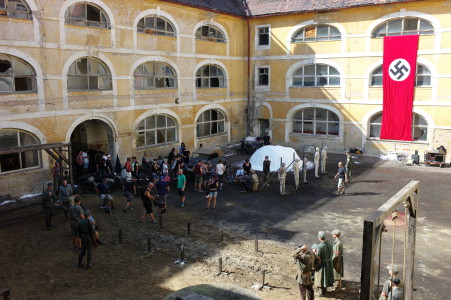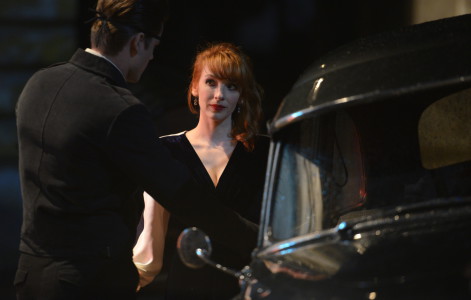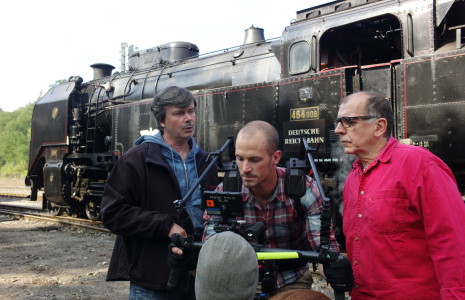At the end of this past summer, seven German television projects began shooting in the Czech Republic under the wings of two local companies, Wilma Film and Mia Film. In total, the productions will spend nearly 15.5 million Euros on staff and services here.
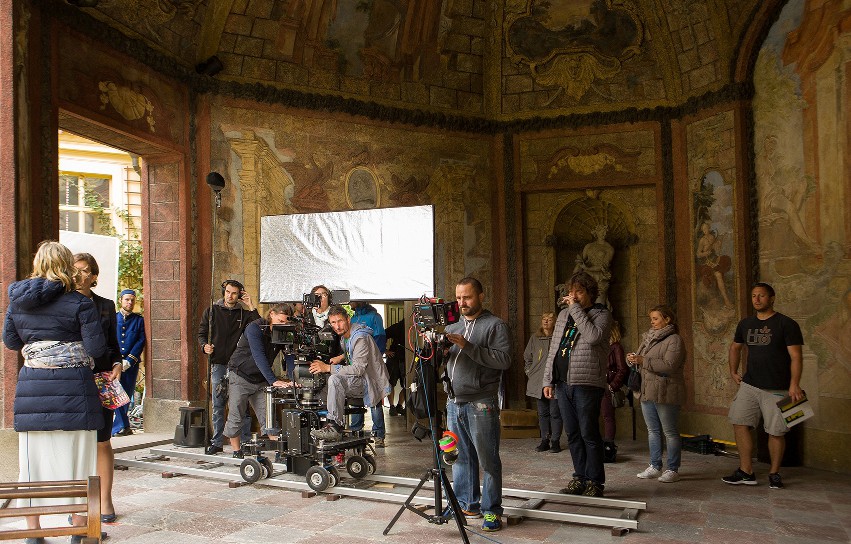
Filming "Ein Sommer in Prag" (A Summer in Prague) | Photo courtesy of Moviepool / Mia Film
The Tannbach II series directed by Alexander Dierbach has a total budget of EUR 9.7 million, of which 4.7 million has been earmarked for costs in the Czech Republic. German television ZDF begins broadcasting the series next autumn. Wilma Film is handling the Czech side of the production, and its crew will spend most of the 75 shooting days in the Ústí region. Czech locations represent Tannbach, a fictitious tiny border town which is divided by a fence between West and East Germany. In the 1960s, that fence is replaced by a concrete wall, a reality that shapes the villagers’ fates and disrupts their personal relationships.
The TV family drama Zuckersand (Sugarsand), shot by director Dirk Kummer for the main public German channel ARD, is also set in the former GDR, in the late 1970s. “The German filmmakers were surprised that in Prague and its environs there were enough locations that look plausible from a historical point of view and so didn’t need much modification. The biggest challenge rather was to find a factory hall where we could dig 10 metres below the floor,” says Wilma Film producer Filip Hering. The reason is that the drama’s two main protagonists, both 10-year-old boys, try to dig to Australia. The location team finally found a foundry near Prague with a pit designed for cooling moulds of molten steel which served as a backdrop for the scene. Over two months of preparation and 29 days of shooting in the Czech Republic, the German production spent EUR 1.6 million out of a total budget of EUR 2.8 million.
Rounding out the trio of autumn orders for Wilma Film is a historical drama for the TV channel SAT.1 called the Ketzerbraut (The Heretical Bride) the filming of which, across various Czech regions, lasted 25 days. The story is set in the period of the Lutheran reformist movement and was shot at many historical locations – the filmmakers also built a set with a faithful labyrinth of lanes from the 16th century. Directed by Hansjörg Thurn, the film was co-produced by Austrian television station ORF. Of the total budget of EUR 4.7 million, some EUR 1.77 million was spent in the Czech Republic.
But just why are German television channels so fond of shooting in the Czech Republic? Mia Film producer Michal Pokorný explains: “Mostly, it has to do with the wide range of available locations dating from the Middle Ages to the present day. Of course, we also are an attractive destination for our German-speaking partners due to proximity – quickly and easily accessible by car, plane or train. What’s more, we have many quality specialists in various specific professions which are dying out in other countries due to their low utilisation.”
Mia Film has also just worked on a two-part historical film for the television station ZDF: Himmel und Hölle (Heaven and Hell), which, like The Heretical Bride, focuses on the reformist movement in Germany, and its central leader, Martin Luther. The story takes place in 1517 and in the years immediately following the publication of Luther’s 95 Theses. Filming continues until 6 December. After 50 days of shooting in the Czech Republic, filmmakers will have spent EUR 3.8 million here.
Meanwhile, for ARD, under the working title Das Verschwinden (The Disappeared), a four-part contemporary miniseries is now being filmed. It is set in a small town near the Czech border, where a 20-year-old woman disappears. Everyone is convinced that she has gone voluntarily – everyone except for her mother, who is convinced that something bad must have happened to her, and so she starts her own investigation. In the main role, director Hans Christian Schmid presents Julia Jentsch, perhaps best known from the film The Edukators (Fetten Jahre sind vorbei, Die) or from the Oscar-winning Downfall (Der Untergang). At Czech locations, filmmakers will spend EUR 1.55 million for 22 shooting days.
At Mia Film this year two other projects for ARD were also completed. Die Freibadclique (The Swimming Pool Clique), a historical drama from the years 1944 and 1945, tells a universal story of friendship and the desire of young people to experience true love despite the cruel circumstances that war brings. Ein Sommer in Prag (A Summer in Prague), in contrast, is a romantic story set in the present, in which a German psychologist travels to Prague to find the father of his now adult daughter. Directed by Karoly Meeder, it was filmed in several Prague districts – and of course in the magnificent historic city centre.
According to the latest news, it seems that the current flurry of German productions is definitely not abating. “We know of three or four more films planned for the spring of 2017,” says Ludmila Claussová of the Czech Film Commission. “We greatly appreciate the interest of German filmmakers. Apart from historical period pieces, this year there has been plenty of filming of the real Prague, of Prague as itself and not as a stand-in for another European or other world city,” she adds.
